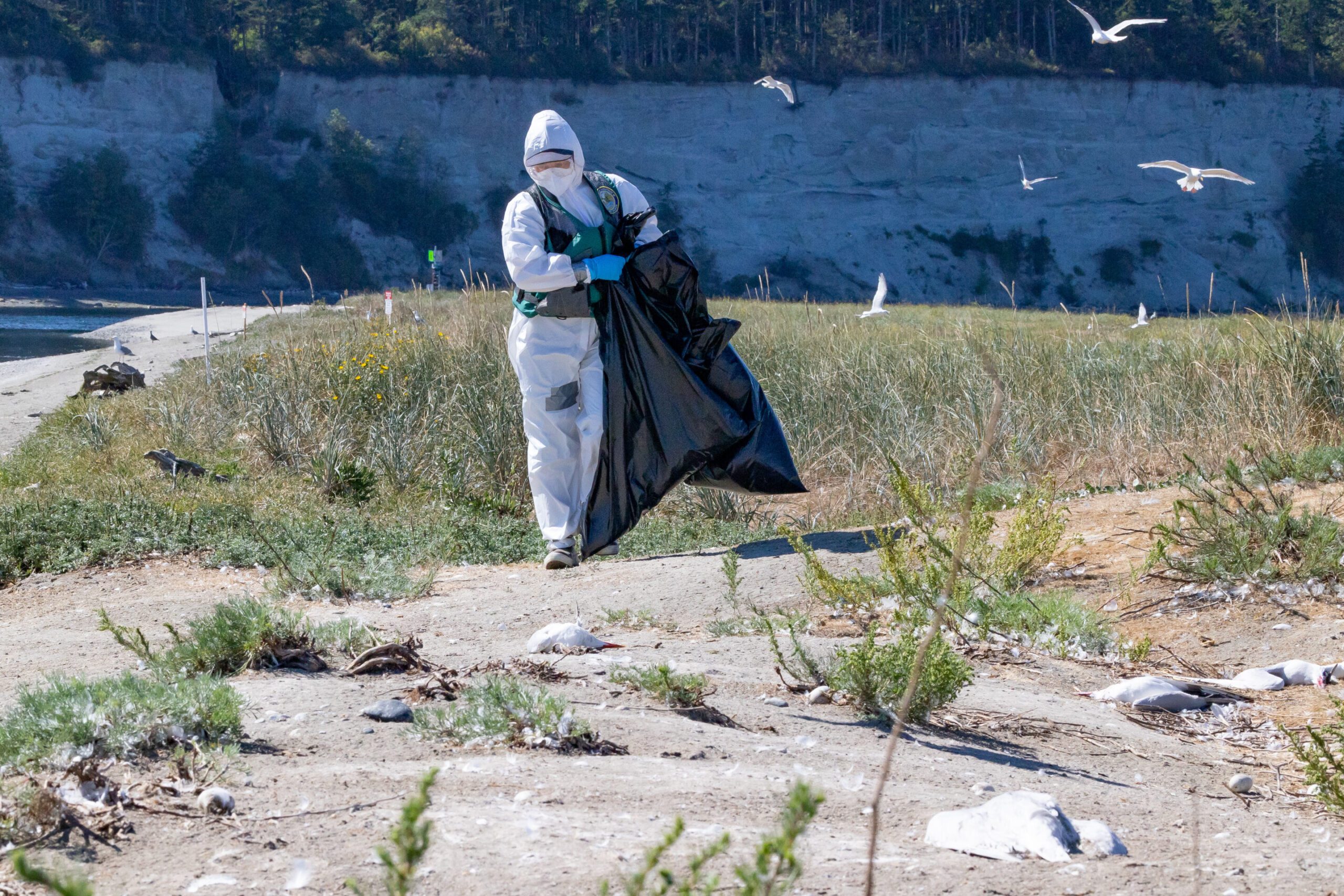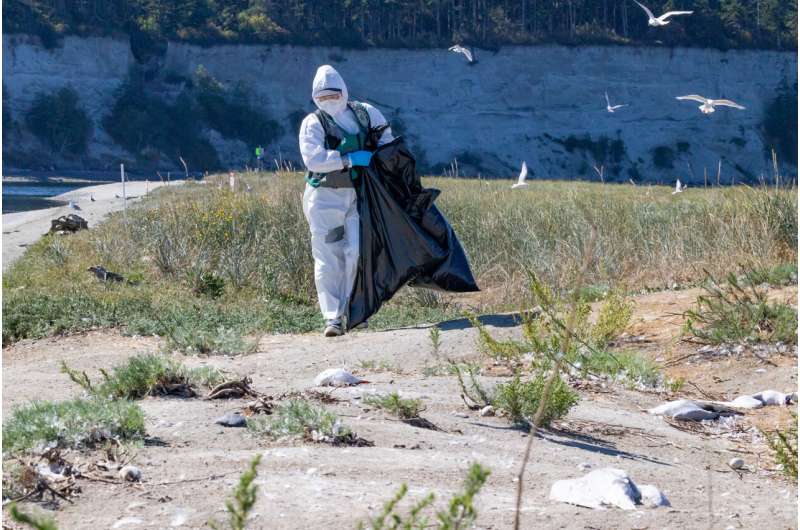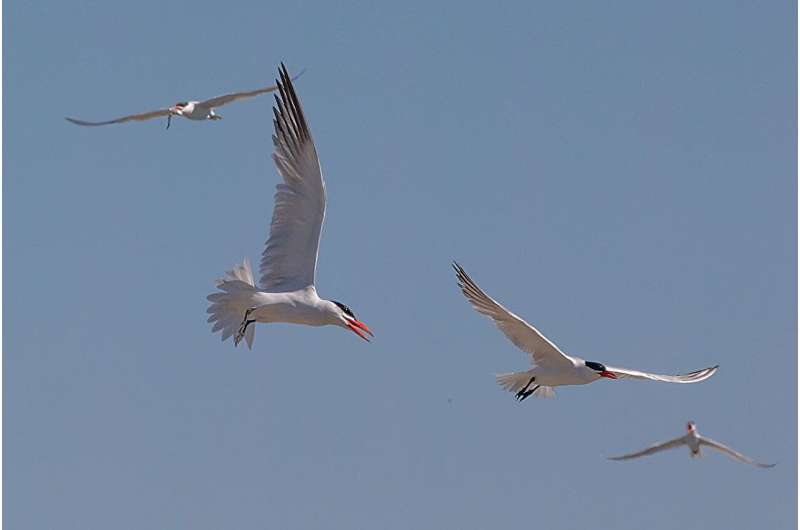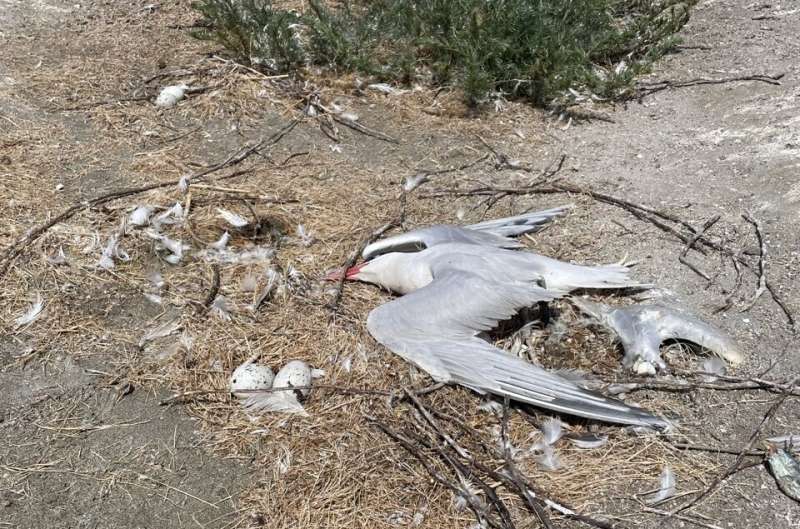

An epidemiological study found that 56% of a large breeding colony of Caspian terns died from a 2023 outbreak of highly pathogenic avian influenza at Rat Island in Washington state. Since then, no birds have successfully bred on the island, raising concerns that the outbreak may have had a significant impact on an already declining Pacific-coast population.
As part of the study, a team including Washington Department of Fish and Wildlife (WDFW) as well as Washington State University researchers also documented that the avian flu virus H5N1was transmitted to harbor seals for the first time in the northeastern Pacific.
While there has not been another large coastal wildlife outbreak of H5N1 since, researchers estimated that about 10%–14% of the Caspian tern population in the Pacific flyway have been lost to H5N1 infections.
“This Caspian tern event was the first big marine environment avian flu outbreak for Washington. It caused a significant, punctuated mortality for the Caspian terns, which were already a species in decline throughout this flyway,” said Katherine Haman, a wildlife veterinarian for WDFW and lead author on the study published in the journal Frontiers in Veterinary Science.
Caspian terns are found across the country, and until a couple years ago, their largest breeding site was an island in the lower Columbia River, downstream from Portland. Because the birds were feasting on young, endangered salmon, they were discouraged from nesting on that island. It is likely that a portion of the extremely large Columbia River colony relocated to Rat Island near Fort Flagler Park in Jefferson County—then, came the avian flu in 2023.

Haman credited citizen volunteer docents from the Friends of Fort Flagler and local kayaking guides with noticing the first bird deaths on Rat Island early and alerting officials. This allowed researchers to respond early, collecting dead birds and euthanizing sick ones. A total of 1,101 adults and 520 chicks were killed by the outbreak.
The researchers also noted 15 dead harbor seals in the area which usually only sees one or two seal deaths a year. Through tissue samples, WSU researchers at the Washington Animal Disease Diagnostic Laboratory (WADDL) were able to first identify H5N1 in the birds, but the tests in seals were harder to confirm.
“We tend to think of avian influenza as a respiratory disease, but the seal respiratory samples were initially negative for H5N1. That seemed odd because there was a relatively high mortality in the seals, and there were also birds that were sick at the same time,” said co-author Kevin Snekvik, a WSU veterinary pathologist and WADDL executive director.
Further testing in other organs revealed that avian flu had a different pathology in the harbor seals causing an inflammatory response in their brains. The team performed a whole genome sequencing of the virus confirming that the seals likely contracted the virus from the terns.

Avian influenza has been killing many seals and sea lions in other parts of the world, particularly in South America, but so far that same spread has not yet occurred in the Pacific Northwest. The consequences for the terns in the region, however, has been more dire.
There is no vaccine or treatment yet available in the U.S. for animals impacted by the avian flu. It is difficult to control in wildlife given the rapid spread and the difficulty associated with capture and handling of wild animals, so at this stage, researchers are trying to gain insights on the spread of the disease in wild populations by tracking the spread and understanding the impact.
Human cases of avian flu in Washington and elsewhere in the U.S. have occurred primarily in agricultural workers who were in close contact with infected domestic animals, according to the Centers for Disease Control and Prevention.
The researchers emphasized that people should not touch sick or dying wildlife, and instead report the animals on WDFW’s website.
More information:
Katherine H. Haman et al, A comprehensive epidemiological approach documenting an outbreak of H5N1 highly pathogenic avian influenza virus clade 2.3.4.4b among gulls, terns, and harbor seals in the Northeastern Pacific, Frontiers in Veterinary Science (2024). DOI: 10.3389/fvets.2024.1483922
Provided by
Washington State University
Citation:
Washington coast avian flu outbreak devastated Caspian terns, jumped to seals (2024, November 6)
retrieved 6 November 2024
from https://phys.org/news/2024-11-washington-coast-avian-flu-outbreak.html
This document is subject to copyright. Apart from any fair dealing for the purpose of private study or research, no
part may be reproduced without the written permission. The content is provided for information purposes only.